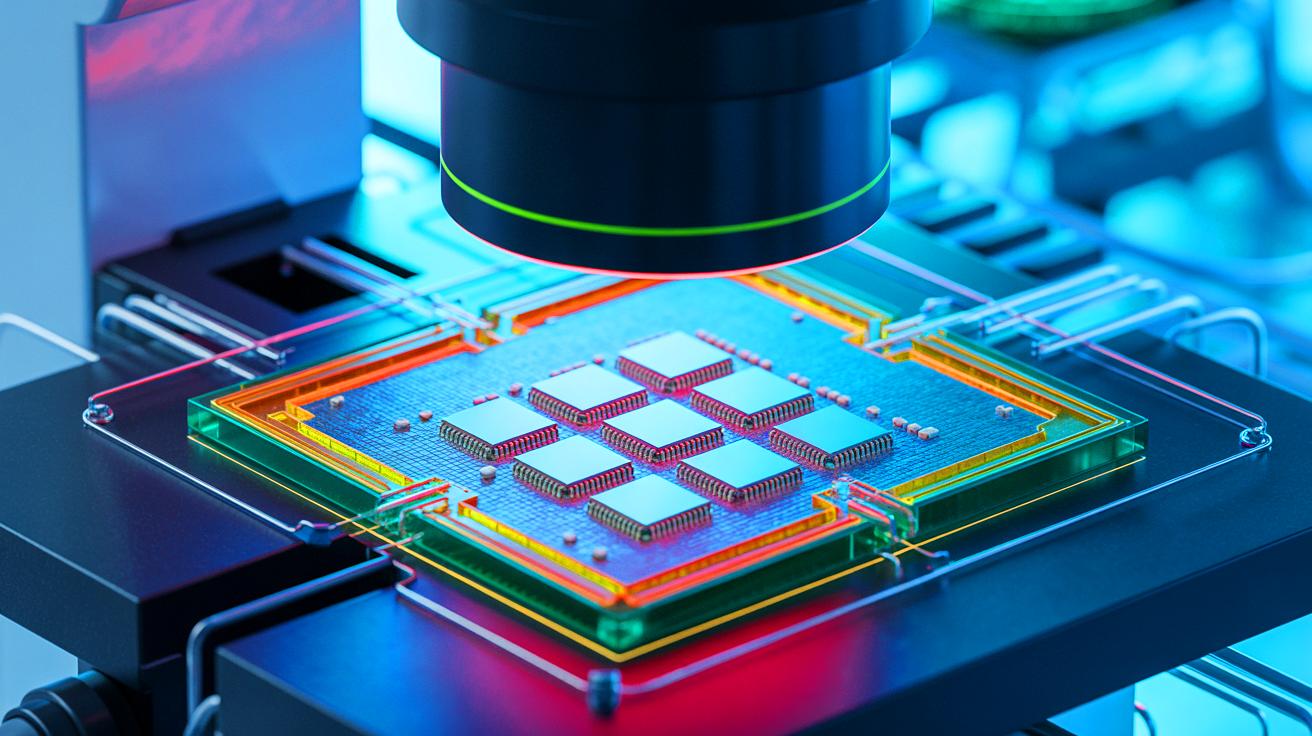| IN A NUTSHELL |
|
In a groundbreaking development, researchers at MIT have pioneered a new fabrication process that integrates high-performance gallium nitride (GaN) transistors onto standard silicon CMOS chips. This innovation promises to revolutionize the semiconductor industry by significantly reducing costs and overcoming previous challenges associated with GaN integration. The novel method utilizes standard semiconductor manufacturing facilities, incorporating low-temperature copper bonding, making it both scalable and economically viable. As the second most widely used semiconductor after silicon, GaN’s unique properties render it ideal for a variety of applications, including lighting, radar systems, and power electronics. This advancement could have far-reaching implications for the future of electronic devices.
Transforming the Semiconductor Landscape
The integration of gallium nitride with silicon chips marks a significant breakthrough in semiconductor technology. MIT’s research team has addressed the high cost and specialized integration requirements that previously limited GaN’s broader application. By employing a low-temperature copper-to-copper bonding process, they have made it feasible to incorporate small amounts of GaN into silicon chips, substantially boosting performance while keeping costs low. This integration not only enhances the functional capabilities of electronic devices but also maintains the integrity of both materials involved.
The implications of this technology are vast. For instance, the researchers successfully built a power amplifier using this method, demonstrating improved signal strength and efficiency over traditional silicon transistors. This development suggests that consumer electronics, such as smartphones, could soon benefit from enhanced call quality and increased wireless bandwidth. Furthermore, the extended battery life resulting from these advancements could transform user experiences, making devices more reliable and efficient.
Advantages of Hybrid Chip Technology
The hybrid chip technology developed by MIT presents several advantages over existing solutions. By combining the best attributes of silicon and gallium nitride, the researchers have created a versatile platform that can adapt to various commercial markets. The process of creating tiny GaN transistors, or “dielets,” and bonding them onto silicon chips allows for a compact design that reduces system temperatures and improves performance.
Pradyot Yadav, an MIT graduate student and lead author of the research paper, emphasized the transformative potential of this technology. He noted that lowering costs and improving scalability while enhancing device performance make this a compelling option for widespread adoption. The team’s innovative approach could pave the way for new commercial opportunities in industries ranging from telecommunications to consumer electronics, potentially reshaping how electronic devices are designed and manufactured.
Compatibility with Existing Manufacturing Processes
One of the most significant benefits of this new integration method is its compatibility with standard semiconductor manufacturing processes. By avoiding the use of expensive materials like gold and employing low-temperature bonding techniques, the researchers have ensured that their process can be easily adopted by existing foundries. This compatibility not only facilitates the integration of GaN in current electronics but also opens the door to future technological advancements.
The potential applications of this technology extend beyond traditional electronics. The integration of GaN transistors onto silicon chips could support quantum applications, as gallium nitride performs well at the cryogenic temperatures required for certain types of quantum computing. This versatility highlights the broad impact that MIT’s innovative approach could have across different fields, making it a cornerstone for next-generation technologies.
Potential Impacts on Future Technologies
The successful integration of GaN transistors onto silicon chips represents a pivotal moment in semiconductor research. As the demand for more efficient and powerful electronic devices grows, this technology offers a viable solution to meet these needs. The ability to create high-performance power amplifiers indicates the immediate potential for improvements in wireless communication and other areas.
As researchers continue to refine and expand this technology, the possibilities for its application are virtually limitless. From enhancing consumer electronics to supporting advanced quantum computing, the integration of GaN and silicon could redefine what is possible in the semiconductor industry. This innovative approach sets the stage for further exploration and development, inviting new ideas and applications that could shape the future of technology.
As we look to the future of semiconductor technology, the integration of gallium nitride transistors onto silicon chips presents exciting opportunities for innovation and growth. With its potential to transform industries and improve electronic devices, this groundbreaking technology raises an intriguing question: How will the continued development of hybrid chip technology influence the next generation of electronic devices and applications?
Our author used artificial intelligence to enhance this article.
Did you like it? 4.6/5 (28)





